Quick Reference
1933
Cummington, Mass.
Oil on Canvas
Landscape
Farms, Lanscapes & Views
25" x 30"
Boston Art Club 1933
Hampshire Bookshop 1933
Valleyhead Sanitarium, 1933 - '34
Amherst Coll. Jones Library, '34
MacBeth Galleries (NYC), 1934
Unknown
NA
Additionally, a painting by the same name exhibited at the 1928 J.H. Miller show but we believe it is unlikely it is this painting.
Featured Artwork: High On The Hill
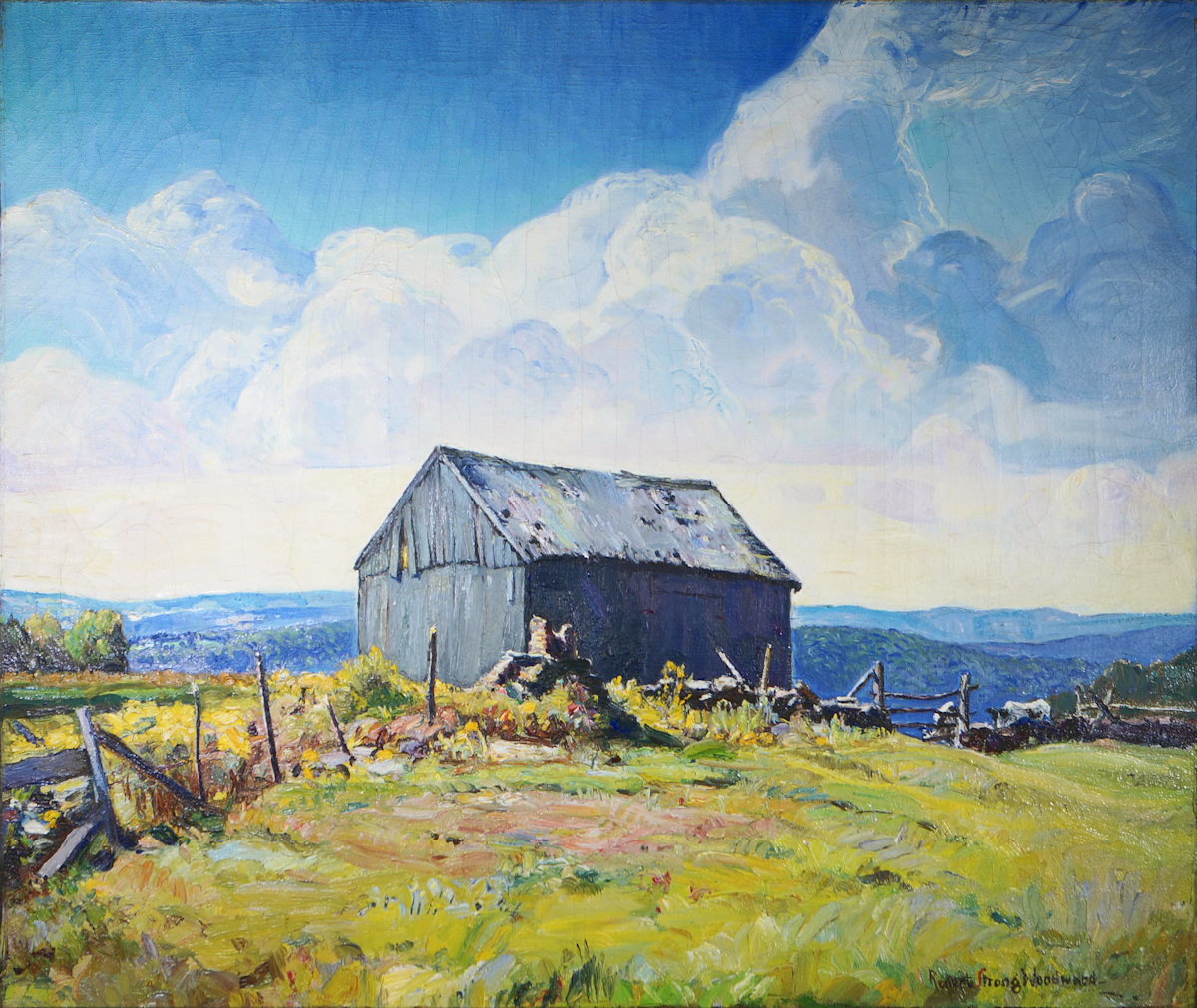
The IMAGE ABOVE is, New England Heights, a 25" x 30" and the same subject as this painting and
made from the original inspiration, the larger 40" x 50" New England Origins.
RSW's Diary Comments
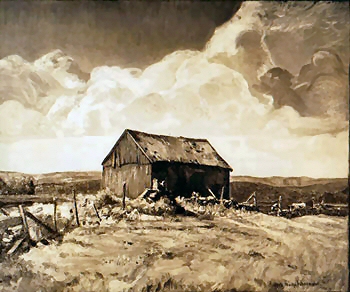
Image of the Sepia Print
Diary Comments from New England Origins
"Painted about 1931. A large 40" x 50" made at the top of the semi-abandoned road up out of Swift River past the Howe's farm (see Contentment) Shown at Jordan Marsh Exhibition, Boston in 1932, where it ran close to winning the popular vote and from where Mr. N. Bill tried to buy it for the Springfield (Mass) Museum for $600 for which amount I refused to sell it. Exhibited largely."
Diary Comments from New England Heights
"Painted around 1930. Painting of a barn in Cummington-Chesterfield district on steep old road that goes out of Swift River up by the Howes" farm (where Contentment was painted). This is the same subject as the 40" x 50" New England Origins. Sold from the studio in April, 1950" and is currently in a private collection in Massachusetts."
Comments on the back of a sepia print:
"Poor reproduction of a well-painted canvas. Possibly coming from Grand Central Galleries, N.Y. Possibly not."
[EDITOR'S NOTE: This comment made by RSW is NOT a reference to the painting itself, but rather, the photograph taken by Ashworth. There is speckling of reflection
throughout the sepia making the painting appear noisy and poorly painted. ]
All of the paintings are "well-painted" otherwise they would have never left the
studio, or been exhibited and in all liklihood would have been destroyed, possibly after he repainted the scene. He was not comparing High on the Hill to
New England Heights, in terms of, New England Heights, being the better painted of the two. He would not permit two paintings of the same scene to
exhibit with one being clearly "well-painted" while the other was lacking.
Editor's remarks on the importance of the sepia's:
Sepia's were used to send galleries a preview of the work. An artist would also send them to judges paneled to select paintings to be exhibited for their upcoming events. The quality of these images were of the upmost importance and needed to reflect the painting's best representation. Often, we find handwrittten notes on the back of the prints, where Woodward will describe the color palette and scheme to the viewer. He could not send a poor image to a prospective gallery or an exhibit jury panel.
Additional Notes
An essay by Dr. Mark Purinton 2018 [edtited by BCM]:

 From the 2013 PVMA exhibit featuring Woodward
From the 2013 PVMA exhibit featuring Woodward
is this image of
New England Heights, It is the only
updated and current picture we have of this scene.
"In about 1931, according to the Robert Strong Woodward diary, he made a large 40" x 50" oil painting of a small farm on a hill in the Swift River district of
western Massachusetts. He named it New England Origins. The painting was widely exhibited about the country
and won much praise by viewers and critics.
At about the same time, Mr. Woodward made a smaller 25" x 30" oil of the same subject which he titled
New England Heights, essentially an exact copy of New England Origins. It was recorded in the RSW
diary and it was photographed by Mr. Ashworth. The next year after that Woodward made a third painting of the same scene and named it High on the Hill.
The only remaining negative, in Mr. Ashworth's handwriting, had the title High On The Hill written on it in pencil. But this was boldly crossed out by Woodward and was
filed as New England Heights. The negative is still stored in the RSW studio.
The scene of all three paintings, a single, weathered barn (or shed) high on
a hill, was so popular that all three were widely exhibited concurrently over the same years of 1933 and '34. Perhaps the reason Woodward felt it necessary to have three paintings
of the same scene was the result of its high demand.
MLP

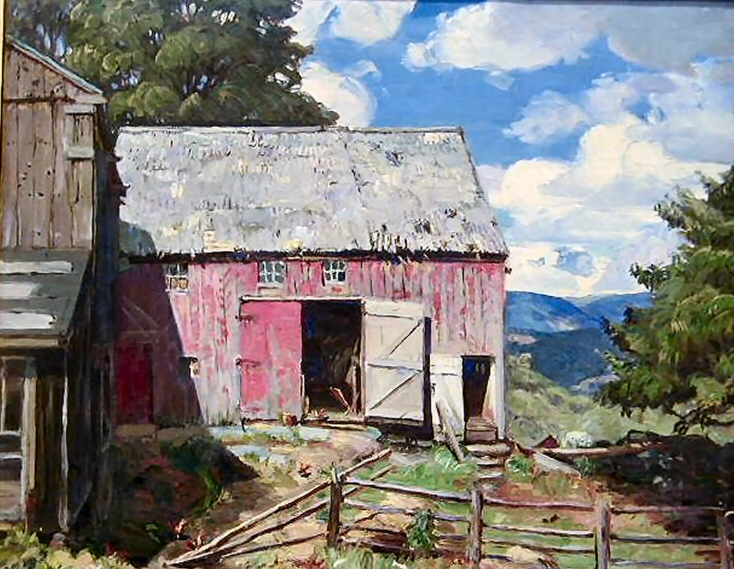
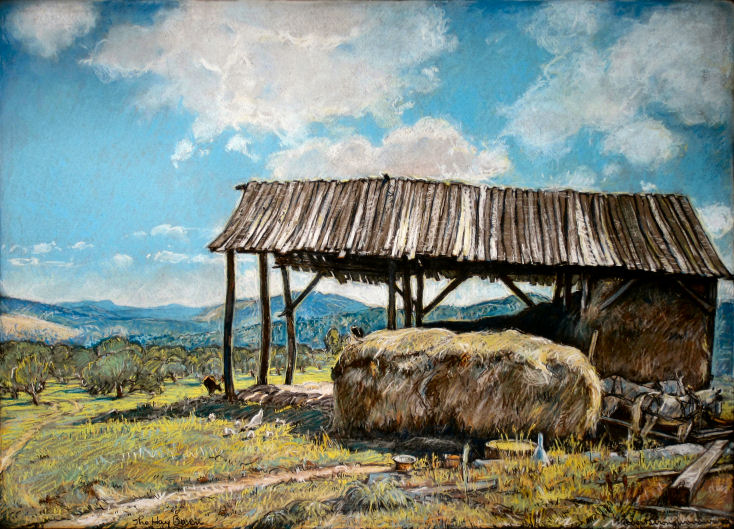
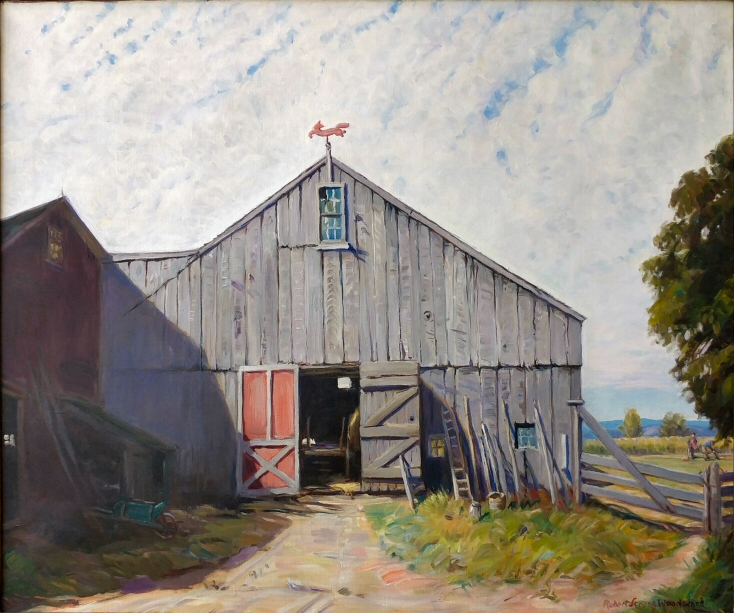
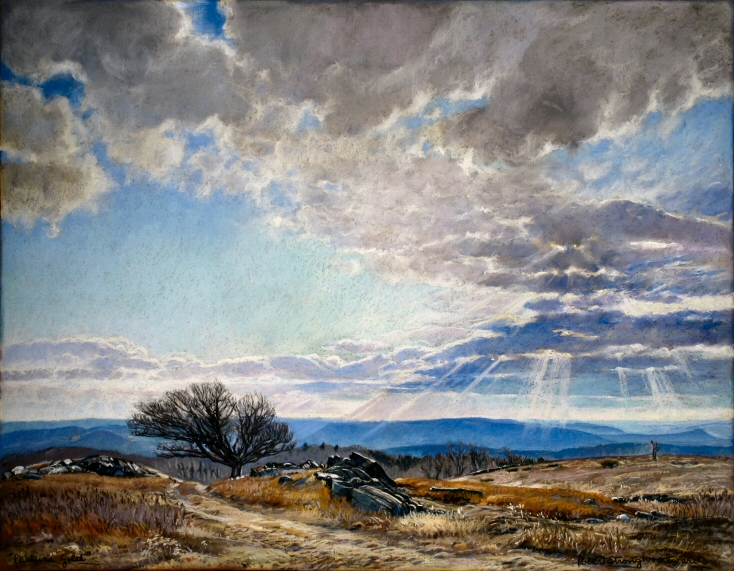
.png)
